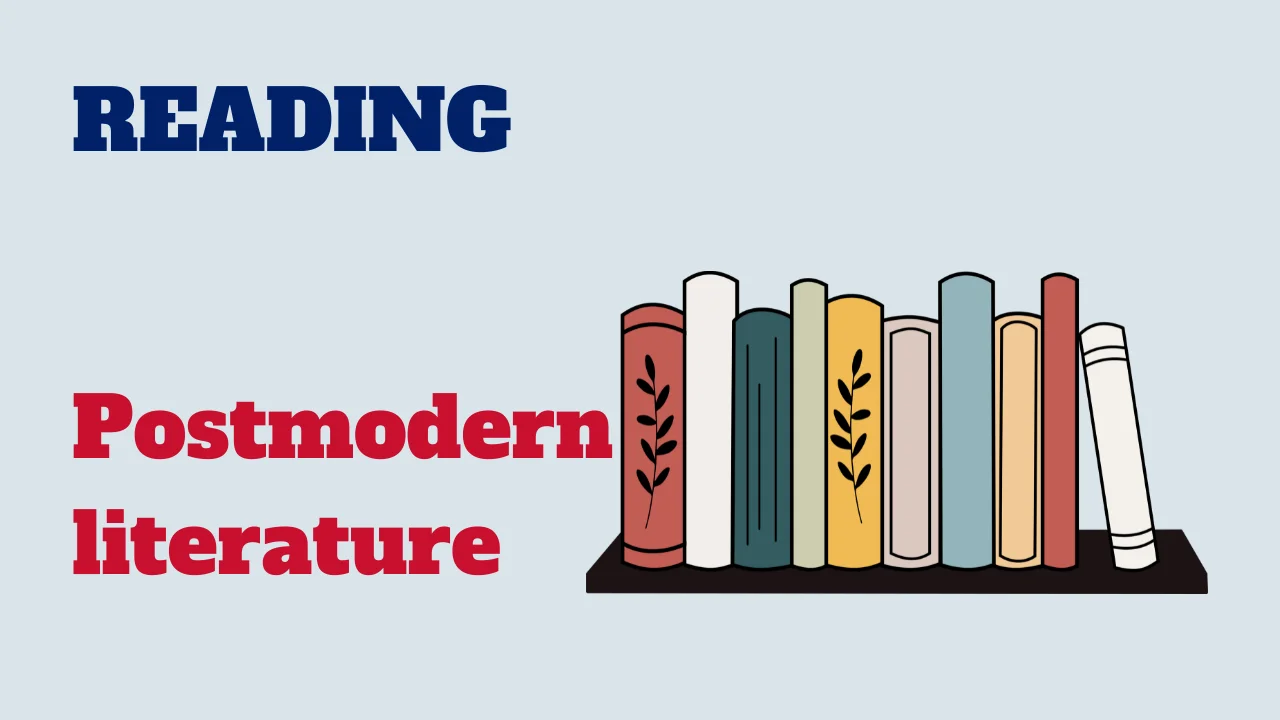Welcome to a new reading activity about postmodern literature, a genre characterized by its experimental and self-reflexive nature, as well as its thematic engagement with historical and political issues.

In this reading activity, we’ll delve into the defining features of postmodern literature, its prominent authors, and its evolution in the contemporary literary landscape.
Text: Postmodern literature
Postmodern literature is a dynamic and eclectic body of work that emerged in the mid-20th century as a reaction against the conventions and assumptions of modernism. Characterized by its diverse approaches and themes, postmodern literature often embraces irony, playfulness, and a questioning of established narratives and truths.
One of the hallmarks of postmodern literature is its self-referential nature. Postmodern texts frequently draw attention to their own status as constructs, blurring the lines between fiction and reality. This metafictional approach invites readers to question the nature of storytelling and the relationship between author, text, and audience. Authors like Kurt Vonnegut, in works such as “Slaughterhouse-Five,” and Italo Calvino, in “If on a winter’s night a traveler,” exemplify this technique by directly addressing the reader and commenting on the narrative process.
Intertextuality is another defining feature of postmodern literature. Texts often reference or incorporate other texts, creating a tapestry of cultural and literary allusions. This practice not only enriches the reading experience but also underscores the interconnectedness of literary and cultural production. Thomas Pynchon’s “Gravity’s Rainbow” and Margaret Atwood’s “The Handmaid’s Tale” are notable examples, weaving together various historical, scientific, and literary references to construct complex, multilayered narratives.
Postmodern literature also challenges traditional notions of coherence and linearity. Authors often employ fragmented and non-linear narratives, reflecting the chaotic and uncertain nature of contemporary existence. Works like Gabriel García Márquez’s
“One Hundred Years of Solitude” and Salman Rushdie’s “Midnight’s Children” exemplify this approach, presenting stories that unfold in disjointed timelines, often incorporating magical realism to blur the boundaries between reality and fantasy.
Another prominent theme in postmodern literature is the questioning of grand narratives and absolute truths. Postmodern writers are skeptical of overarching stories that claim to explain the world in totalizing ways, such as ideologies, historical progress, or scientific objectivity. Instead, they often highlight the multiplicity of perspectives and the subjective nature of reality. This can be seen in Don DeLillo’s “White Noise,” which explores the pervasive influence of media and technology on human perception and understanding.
The use of pastiche is also common in postmodern literature, where authors blend different genres, styles, and cultural elements. This technique allows for a playful and often critical commentary on the nature of artistic creation and cultural production. An example is Jean Rhys’s “Wide Sargasso Sea,” which reimagines Charlotte Brontë’s “Jane Eyre” from the perspective of the “madwoman in the attic,” providing a postcolonial critique of the original text.
Postmodern literature’s embrace of fragmentation, intertextuality, and self-referentiality reflects a broader cultural shift towards questioning established norms and embracing complexity. It challenges readers to engage actively with texts, to seek out meanings in the interplay of references and narrative layers, and to appreciate the richness of diverse voices and perspectives. In doing so, postmodern literature continues to influence contemporary writing and thought, pushing the boundaries of what literature can be and do.
Comprehension questions
Congratulations on completing the exploration of postmodern literature! By examining its defining features, key authors, and cultural significance, we’ve gained insight into this complex and influential literary genre. As postmodern literature continues to evolve, let’s remain curious and engaged, exploring its rich tapestry of themes and techniques.



